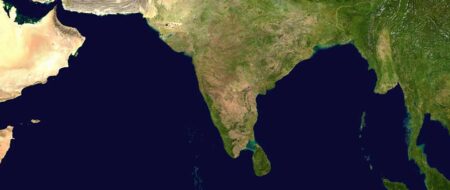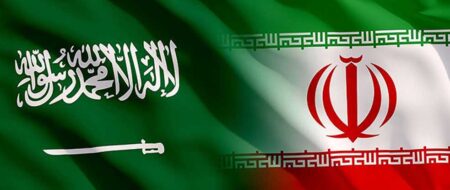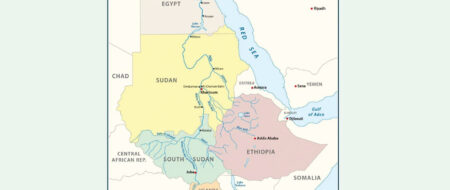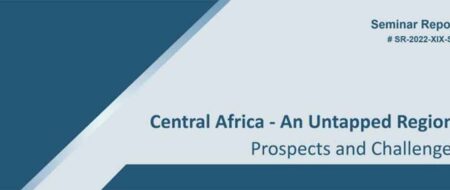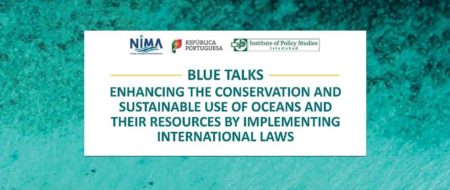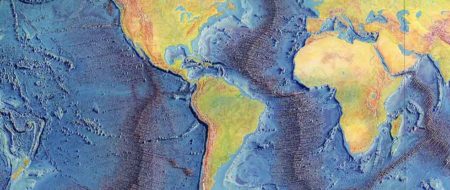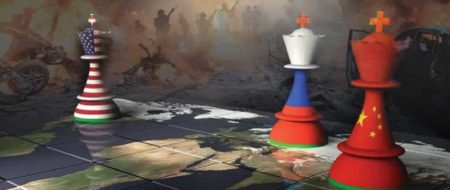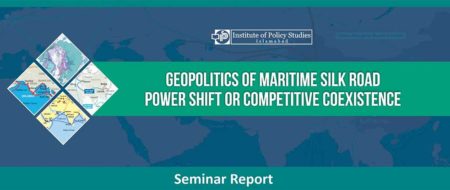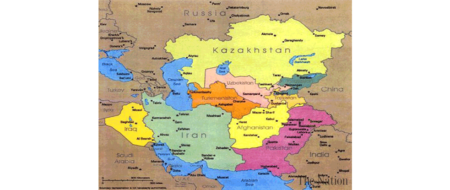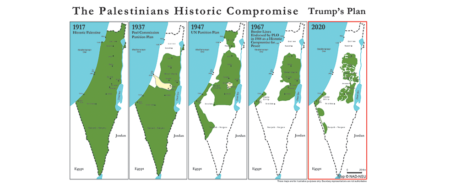Situation in Afghanistan and its implications on the Central Asian region
Understanding the situation in Afghanistan and its implications on the Central Asian region requires a deep analysis of three important aspects: the security problem in Afghanistan from its genesis to the current dynamics, its spillover effect on the neighboring region, and options and choices available to the regional countries in general and Central Asian Republics in particular.
Understanding the situation in Afghanistan and its implications on the Central Asian region requires a deep analysis of three important aspects: the security problem in Afghanistan from its genesis to the current dynamics, its spillover effect on the neighboring region, and options and choices available to the regional countries in general and Central Asian Republics in particular. Any conclusion drawn without giving due weight to any of these factors would be superficial and shortsighted.
However, this presentation mainly focuses the situation in Afghanistan and the way forward and analyzes the Afghanistan problem in three broader categories: strategic aspect i.e. strategic significance of Afghanistan and its role in regional matrix; conceptual aspect i.e. objectives of the invasion of Afghanistan and the debate of terrorism; and political aspect i.e. the current situation in Afghanistan and developing scenario. This analysis would lead the discussion towards identifying an approach for solution of current crisis and the role of regional countries.
The strategic significance of Afghanistan can hardly be overemphasized. The emerging power, China, and reemerging power, Russia, energy and resource rich Central Asia and Middle East, and strategically located Pakistan surround Afghanistan. In real-politick terms, stability in Afghanistan and regional harmony among all the countries surrounding it would contribute in the fast-paced development of the region, implying that continuing instability in Afghanistan could easily damage these potentials. Many observers, in fact, believe that instability in the region is an essential outcome of this geopolitical significance. Consequently it is argued that the challenges, which the region and the Central Asian Republics are facing, have a direct relation with the situation in Afghanistan. It is important to keep this dimension in view while analyzing the conceptual aspect of the issue.
After the incident of 9/11, the US launched ‘War on Terror’ and its stated objectives of the invasion of Afghanistan included: Rooting out terrorism by killing or capturing Osama Bin Laden, eliminating Al-Qaeda and its network; destroying Taliban or making them ineffective; and democratization of Afghanistan. Conceptually, however, while a global war, with Afghanistan as its main front, was started against terrorism, there is no definition of ‘terrorism’ which carries consensus of all.
Before 9/11, terrorism was a crime and terrorists need to be brought to court for justice and since it was a crime, finding out the causes or motivation behind such events was a necessary course of investigation; as it was rightly believed that any act of terrorism is not an end in itself but it is used as a tactic and means to achieve some end. But after the attacks on World Trade Centre, a full scale war against a crime was launched, eroding all the established norms of law and justice. Describing it as a war has made the cause irrelevant. As a natural consequence, use of military means became the main strategy, which led to further the cause and the strength of those who were being targeted in the war as a result of collateral damage. It is now a common observation that the problem intensified not only in Afghanistan but also in the world.
The most important target was OBL but nobody knows for sure where he is, whether he is alive or dead and how is he operating. Contrary, the presence of external forces has increased the ideological appeal of Al-Qaeda and its mission. Hardcore Taliban who were estimated to be a few hundred at the time of invasion have transformed into a kind of nation-wide resistance movement. According to NATO intelligence, the Taliban and other guerilla movements can draw on a base of up to 500,000 potential fighters1 they are now believed to run a shadow government in 33 of Afghanistan’s 34 provinces with a core of about 25,000 to 30,000 fighters. David Petraeus also acknowledged this situation saying, “… Taliban increasing their influence, control of certain areas, development of infrastructure, revenue generation, command and control establishment, and ultimately you have a situation where now there are 33 [Taliban] shadow governors for a country with 34 provinces.2” Could there be any hope that with the persistence of the same strategy the global war on terror would be able to achieve its desired objectives?’
Interestingly, and probably be due to this failure on ground, the emphasis of occupying forces has continuously been shifted from one set of objectives to another. Sometimes it is focusing on stemming down the resistance and some other times on the rehabilitation and strengthening of the political structure and democratic institutions in Afghanistan and more recently on the development and training of armed and security forces. This situation raises another important and even more serious question: whether the US invaded Afghanistan for achieving the stated objectives only. Many experts believe it was an attempt to assert American dominance in the regions surrounded by energy-rich areas and that the American ruling elite is determined to consolidate Afghanistan as a neo-colonial US protectorate and a staging post for further intrigues in Central and South Asia and the Middle East.3
In this backdrop, it is easy to understand the political aspect of the issue, i.e. the current situation in Afghanistan and the emerging scenario. There are four important elements to analyze in this regard: security, governance, international efforts and the role of regional countries.
Looking at the rate of casualties of occupation forces in Afghanistan briefly, it would not be difficult to understand the security of civilians and civilian infrastructure in the country. The year 2009 saw the highest number of casualties of foreign soldiers since 2001.4 The combined death toll among US and NATO personnel reached 522 by December 31, compared with 295 in 2008.5 Total American fatalities stand at 319, twice as many as 2008. At least another 1,500 soldiers and marines have been wounded. Proportionally, the 9,500-strong British force suffered even greater casualties, with 108 dead and more than 450 wounded-in-actions.6 Thirty-two Canadians and 63 soldiers from other countries taking part in the occupation were also killed. As to the civilians the UN estimates that at least 2,038 civilians died in Afghanistan in the first 10 months of the year 2009 and half of these were the result of military operations by the international forces. With Taliban running shadow governments in 33 provinces, it should be clear just how much control the coalition forces have on the security situation in the country.
Similarly, the elected government of Hamid Karzai is facing serious problems. There is no need to go into the details of governance issues such as prevalent corruption not only in government bodies but also in foreign NGOs and international agencies, poor law and order, justice system, and infrastructure. The general perception in the country is that the large segments (Pashtun) of the population have been marginalized. In General Mc Chrystal’s words, “Local Afghan communities are unable to hold local officials accountable through either direct elections or judicial processes, especially when those individuals are protected by senior government officials.”7 The UN has claimed that almost all of the reconstruction and development projects launched in Afghanistan after 2002 have failed because of corruption in the Afghan government and inefficiency of the US contractors. Similarly, Americans have to pay tens of millions of dollars to private militia annually for escorting their convoys. The private militias extort money from common people and levy agricultural tax on farmers in the name of Ushar. They are involved in burglary, kidnapping and other unscrupulous activities. All these are overlooked by the foreign forces as the militia supports them in their fight against so-called terrorism.8
Because of the governance crisis, disturbed law and order situation and a very slow development pace, the repatriation of Afghan refugees in Pakistan hasn’t taken place. Around 1.7 million Afghans are still living in Pakistan, who are currently registered with United Nations’ High Commission for Refugees (UNHCR) and it is estimated that a large number is also unregistered, and the total figure is around three million. Adding to this is rise in poppy9 production, which is also a very serious concern for all the neighboring countries, and which, though, has marginally gone down recently but had swelled from 1,570 tons in 199010 to 6,000 tons in 200611 and 8,200 tons in 200712. Since 200113, the land used for poppy cultivation has increased from 8,00014 hectares to 193,000 hectares.15
In short, with the US led occupation entering into its ninth year, Afghanistan is still caught in a vicious cycle: corrupt ruling elite eating whatever little resources available to the country, a reticent and religio-nationalist movement resisting the foreign forces aggressively, and an ambitious international community making an effort to bend the situation according to its own whims. Some experts also opine that the coalition currently seems to targeting gaining some time to satisfy their public opinion that an integrated approach is being pursued with space for political process, while aggressively using military means to allow forces to gain strong position on ground. The political process in this focus appears not as sincerely motivated from the desire for a genuine peace but as a means to weaken the Taliban by dividing them. This is essentially the same prescription that Gen. Petraeus’s applied in Iraq16 and means that, at least in the coming several months, the war will further intensify in Afghanistan. There are also different plans and timelines orchestrated by different players of the coalition. At one point, the US chalked out a plan of staying in Afghanistan till 2025, with gradual withdrawal of forces in phases.17 Whereas, on April 17, 2010, the commander of NATO-led operations in Afghanistan, General Egon Ramms said in his recent statement that he had doubts about Afghan forces ability to secure the war-weary country by 2015. This situation reflects the prevailing confusions in Washington and its western allies. There are however questions as to whether this confusion is by-default, by-design or because of the dissension among international players and/or owing to differences among various departments of the US administration.
It is in this background that London Conference, which follows several such conferences in the past,18 and at least twelve other tripartite initiatives19 and regional initiative such as 6+2, taken by the regional and extra regional players should be analyzed. Generally, London Conference was hailed by most of the people involved with Afghan issue, particularly its insistence on finding a political solution instead of military one, suggestion of bringing various Afghan groups on board through grand Jirga and involving the regional countries in solving the problem. However, the aggressive military campaign in Afghanistan soon after the Conference wore away the earlier goodwill. Regarding the tripartite initiatives, it is interesting to note that two of them do not include Afghanistan and, being state initiatives, all of them ignore the resistance groups that are fast becoming the most important player in Afghan crisis. A significant development is the 6+2 initiative involving six neighboring countries: Iran, Uzbekistan, Turkmenistan, Tajikistan, China and Pakistan – and US and Russia.
Although it shows that the regional players and international community are taking interest in reaching a solution to Afghan problem, it in fact also reflects a kind of tug of war where multiple players are trying to secure their own interests and objectives rather than giving preference to stability in Afghanistan. It is high time that UN should realize its responsibility and provide leadership in this matter by bringing all the stakeholders on board including the resistance forces of the country to move in a consensus direction. It should be realized that the groups that are putting up resistance to occupation are not merely non-state actors; they are rather indigenous people and as such have legitimate right to be part of any decisions seeking future arrangement for their country.20 Moreover, regional countries need to pursue a coordinated approach in which the interests of all the regional players are safeguarded and the situation is lead to a setting where foreign and extra regional forces exit. Any absence or lack of understanding between the neighboring countries may repeat scenario of the1990s civil war, which is neither in the interest of Afghanistan nor in the regional countries.
There seems to be a realization among the fighting groups in Afghanistan that with a continued resistance, the international community will have to recognize them as the real player in Afghanistan. It has to be realized that while the occupying forces are pit against the time, the resistance forces have all the time at their disposal as it appears they would continue resisting and making it difficult for the foreign forces to stay for long.
It is also important to realize that contrary to general perception, Taliban are not the only players that are putting up resistance against occupation. There at least two other very important groups, Hizb-e-Islami and the Haqqani Network/Group, along with many small groups, which have their own areas of influence. Within Taliban, there are several denominations. Currently all these various groups and elements are collaborating as they have a single cause of fighting the foreign forces. It may be possible for the international forces to sell out their version of solution to one or two of these resistance forces; however the question remains whether all these groups will surrender to the occupational force that is seen to be on retreat. Similarly, if the occupation does come to an end, whether the US would abandon its declared and other strategic and geopolitical objectives for which it came to Afghanistan?21 Consequently can we hope a sustainable peace and stability in Afghanistan in the immediate future?
The answer to this lies in the whole debate of conceptual aspect, strategic aspect and political aspect of the Afghan quagmire. Firstly, unless it is realized and genuinely recognized by international community in general and regional countries in particular that phenomenon of terrorism has been used tactically by the non-state actors and strategically by the external forces to secure their geopolitical and strategic interests and that the world needs to go back to basics where terrorism was a crime and so was it dealt, stability in the region or for that matter in any part of the world would be a farfetched dream. And secondly history of Afghanistan teaches a very important lesson that the peace and stability in Afghanistan is possible only after the withdrawal of foreign troops; and when all stakeholders within the country are ready to accept each other to at least a point where they can coordinate for a common arrangement. This was true in the past and it holds strong grounds in the present as well. All the international and regional organizations and particularly the neighboring countries need to come up with a solution in which extra regional forces leave Afghanistan and the indigenous people, which of course include the current players as well take responsibility of governing their country in coordination with neighboring countries.
To read the article in Russian click here
The article was published in International Seminar “SECURITY AND STABILITY IN CENTRAL ASIA INTERACTION WITH INTERNATIONAL AND REGIONAL ORGANIZATIONS”, UNRCCA, April 21-22, 2010 Ashgabat, Turkmenistan.
Click here to view the publication title.
1: James Cogan, ‘The Human Cost of the AfPak War,’ The world Scocialist Website, http://www.wsws.org/articles/2010/jan2010/afpa-j04.shtml (April 17, 2010)
2: Newsweek December 28, 2009/January 4,2010, p. 42.
3: James Cogan, ‘The Human cost of the AfPak War’, The world socialist web site, , January 4, 2010, http://www.wsws.org/articles/2010/jan2010/afpa-j04.shtml
7: http://media.washingtonpost.com/wp-srv/politics/documents/Assessment_Redacted_092109.pdf
8: http://www.markthetruth.com/afghanistan/309-the-upcoming-london-conference.html accessed: January 31, 2010.
9: There are different views on who really is benefiting from the opium production and economic activities related to it. A dominant section of media is focusing on a particular aspect that Taliban are using the money generated through this activity to finance their struggle. There are however questions about this view as to why the Taliban, who made painstaking efforts to end its production when they were in control of the country, would go for it now. A related interesting question about the control of drugs is why the global efforts are focused on curtailing the production, while there does not seem to be a serious and concerted effort to curtail the demand. It is an established fact that supply is directly linked with demand. Most of the demand is coming from the Western countries. Curbing the production of drugs requires an effective control over demand.
10: International Monetary Fund March 2006. Islamic Republic of Afghanistan: Selected Issues and Statistical Appendix. Country Report No. 06/114
11: United Nations, United Nations Office on Drugs and Crime World Drug Report 2007
http://www.un.org/radio/news/html/11367.html
12: UNODC, 5th September 2007. Pressure for Tougher Afghan Anti-Drugs Drive.
13: In February 2001, a 12 member team of UN drugs inspectors visited Afghanistan, surveyed its largest opium producing areas and found that Taliban have almost wiped out the poppy cultivation.
14: Afghanistan five years later: charting the reconstruction: CSM October 12, 2006 edition
http://www.csmonitor.com/2006/1012/p12s01-wosc.html
15: UNODC, 5th September 2007. Pressure for Tougher Afghan Anti-Drugs Drive.
16:In Iraq, Gen. Petraeus had managed to get the anti-Saddam Shiite elements within society on the side of the coalition and also raised local councils as part of the nation-building. His “surge doctrine” included points such as: “do not do too much with your own hands, money is ammunition, increasing the number of stakeholders is critical to success, success in a counterinsurgency requires more than just military operations, ultimate success depends on local leaders, there is no substitute for flexible and adaptable leaders, and, finally, a leader’s most important task is to set the right tone”. He unveiled his 14 ideas on the surge cum engagement with locals in his Jan 23, 2007 Senate Armed Services Committee hearing after nomination to lead all U.S. troops
17: Testimony of Lt. Gen ® David Burno before the US Senate Armed Services committee, February, 26, 2009
18: Some of these involving a large number of countries and agencies include Bonn 2001, Berlin 2004, London 2006, Rome 2007, Paris 2008, Moscow 2009
19: These include: 1) Pakistan, Iran and Afghanistan, 2) Afghanistan, Pakistan and Turkey, 3)Pakistan, USA and Afghanistan, 4)India, USA and Afghanistan, 5)Russia, India and Afghanistan, 6)NATO, Afghanistan and Pakistan, 7)Pakistan, Saudi Arabia and Afghanistan, 8)USA, Israel and India, 9)Russia, India And China, 10)Iran, India and Afghanistan, 11)US, UK and Afghanistan, 12)US, EU and Afghanistan
20: It may be useful to point out here that the Taliban organization has two separate Shuras (consultative bodies) consisting of 27 and 26 members for political and operational affairs respectively. For any communication with Taliban the Poliotical Shura will have to be taken into confidence.
21: Building of several military bases in Afghanistan and acquisition of large land holdings by the Americans there give credence to the apprehensions that it is aggressively working on an alternate plan to continue its influence by having an ability to directly manipulate the developments in the region when it leaves.



